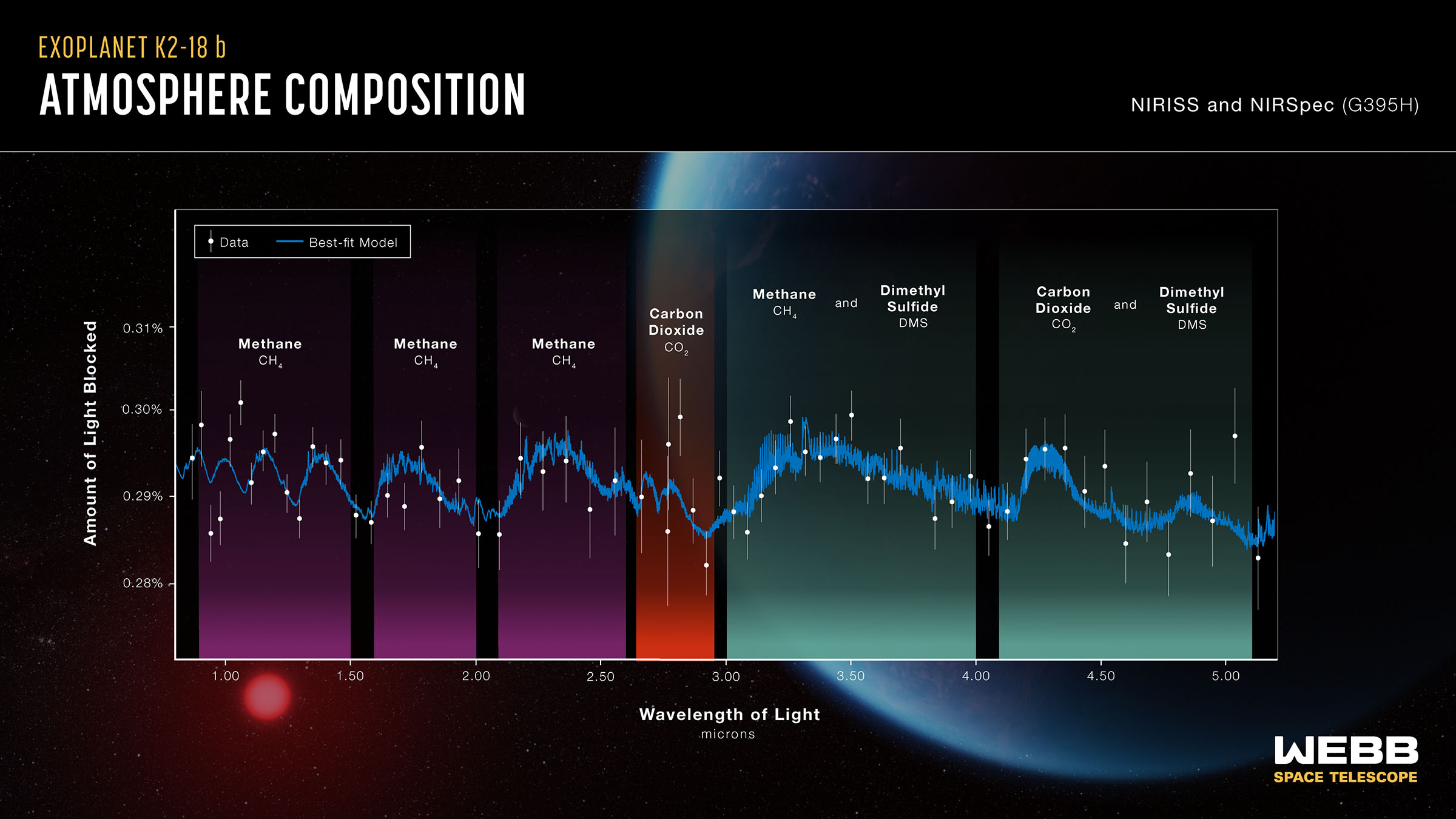An ocean world first discovered in 2017 has provided new evidence that it may be closer to our world than previously thought. K2-18 b is a very alluring target for astronomers in the search for life beyond our own planet. Previous observations of the planet suggest it’s an ocean world, and now Webb’s observations suggest it could have carbon-based molecules in the atmosphere.
New results captured by James Webb suggest that traces of both carbon dioxide and methane have been discovered in the atmosphere of K2-18 b. The planet was already intriguing enough because it is located within the habitable zone of its star system. The habitable zone of a star system is defined when a planet orbits within a small area of space that allows for the existence of liquid water.
These areas are typically when the planet is not too hot or too cold, allowing for liquid water and other possible factors of life to exist. The fact that the Webb telescope discovered evidence of carbon molecules is exciting. But what is really exciting is that Webb observed everything here without detecting ammonia, which helps bolster the possibility that K2-18 b is, in fact, an ocean world.

“Our findings underscore the importance of considering diverse habitable environments in the search for life elsewhere,” research lead author and University of Cambridge scientist Nikku Madhusudhan explained in a statement. “Traditionally, the search for life on exoplanets has focused primarily on smaller rocky planets, but the larger Hycean worlds are significantly more conducive to atmospheric observations.”
The initial research here also suggests that a molecule known as dimethyl sulfide (DMS) could be present in the atmosphere. Here on Earth, this molecule is only produced by life, which could mean some form of phytoplankton is living in the oceans of K2-18 b. Of course, that’s all based on the evidence that is presented in these new details, and none of it has been proven with scientific certainty.
The possibility that life could exist on this ocean world is exciting, though, and certainly something for Webb enthusiasts to look forward to.








